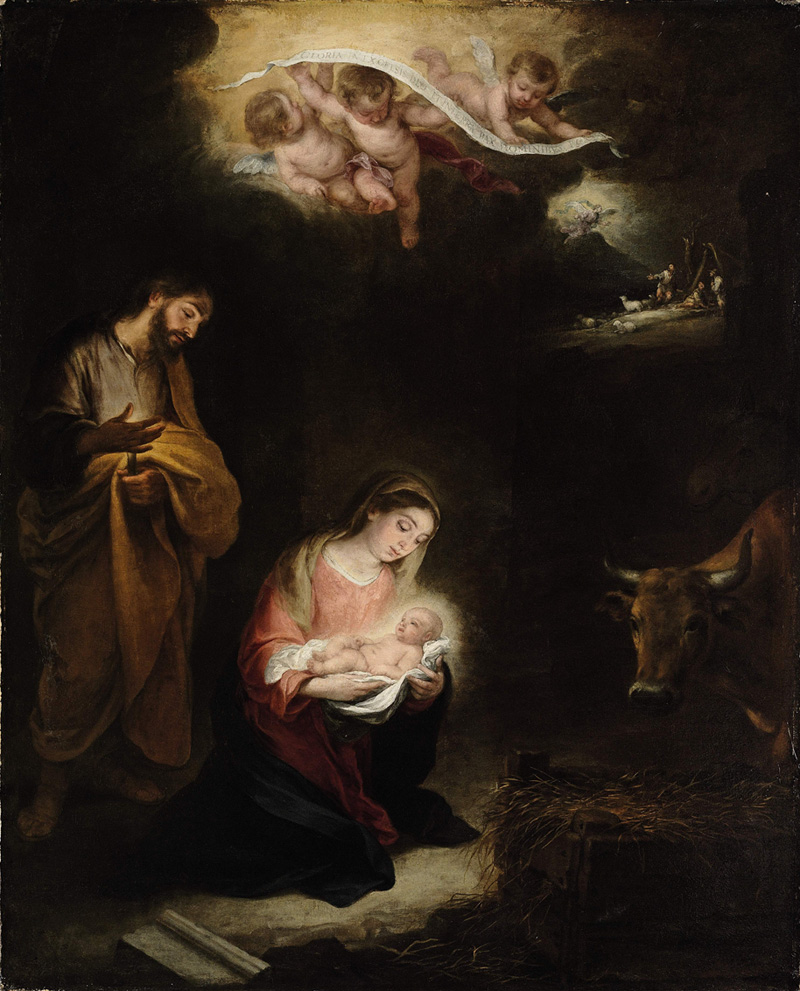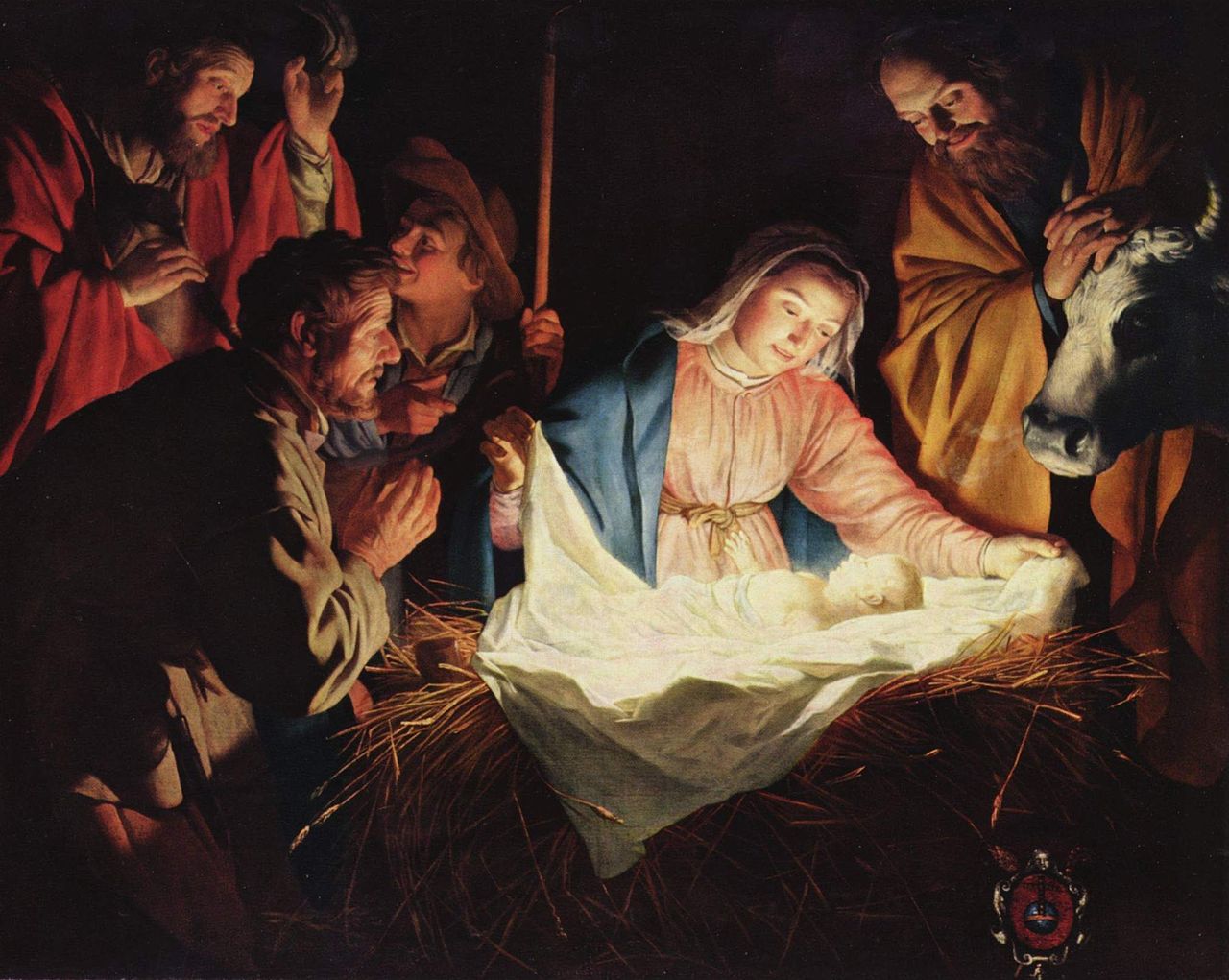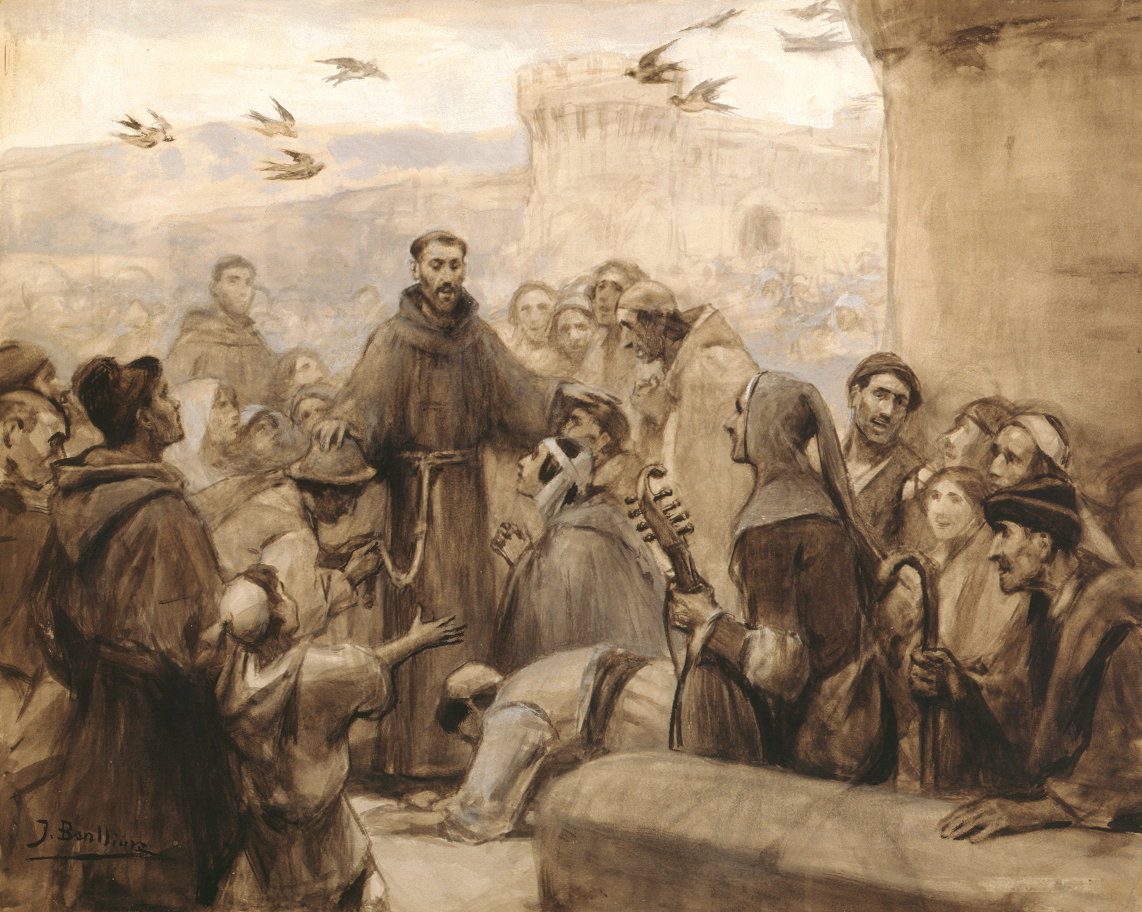Part 7 – A Visit to the Cave
Above: The Adoration of the Shepherds (1645) by Georges de La Tour
It was Christmas Eve, 1223 when a devout monk in the Italian hillside town of Greccio wanted to do something to help the people remember the humble and poor entrance of the Christ-child into the world. Concerned about the greed he saw in the Church, and contrasting that with what he had seen and heard about the birthplace of the Savior while visiting Bethlehem in the Holy Land, the monk set up a manger filled with hay in a dark cave out in the forest. There he brought also a cow and a donkey and invited everyone to join him there for worship on this special night. It was the world’s first live nativity, though it lacked the usual actors and a baby playing out the scene. It was radical and different to say the least. The people came, and they sang hymns in the night and listened as the monk preached the humility of Jesus’ birth. And then came the miracle…a sleeping baby boy appeared there on the hay. It was a sign to all that God had blessed this evening of simple worship with his own divine appearance. God was indeed glorified that very night!
It’s the most wonderful time of the year…
When I was teaching community photography classes, we would discuss at the beginning of the course the difference between the two terms, looking and seeing. Here are their definitions:
Look (verb): to direct one’s gaze toward someone or something or in a specified direction.
See (verb): to perceive with the eyes; discern or deduce mentally after reflection or from information; understand.
We like to use these terms interchangeably, but they indeed mean completely different things. Seeing involves a step beyond looking. Seeing includes interpretation and leads to understanding. It’s the difference between simply snapping pictures and intentionally deciding what to include and exclude in the frame of the photograph.
It’s that time of year when images of Christ born in a manger are to be found anywhere and everywhere…on lawns and roof-tops, on entry tables and fireplace mantles, in store windows and on Christmas greetings. Children will don robes and turbans, shepherd staffs and angel wings. All will be lit and glowing with magic and wonder. It’s the most wonderful and visual time of the year! And when we look at all these images of Christmas will we simply be looking at them or will we be seeing them? Will God be glorified in our hearts by all we lay eyes on this season?
Back in the Early Days

The Adoration of the Magi – fresco from the Capella Graeca (late 3rd/early 4th century), Catacombs of Priscilla, Rome, Italy; Bridgeman Images.
The Nativity of Christ has been portrayed in art from the earliest days of Christianity. In the catacombs of Rome we see three Magi walking one behind another with their gifts as they approach Mary with Jesus seated on her lap.
Icon with the Nativity of Christ (17th century) by Konstantinos Tzanes Bournialis; image by the British Museum
From the 6th century up to about the 13th century, Nativity scenes varied only slightly in their content or style. The icon depictions of the birth of Christ had a story to tell and a question to ask. Let’s explore using the Nativity art I created a few years ago. Compare this also with the icon image featured above as well.

The Nativity of Christ (2011) by Michelle L Hofer
This piece is based in the icon tradition of early Christian art. While most elements in this artwork easily correlate with modern nativity arrangements – angels, shepherds, Mary, Joseph, the Christ child, the star, and the stable animals, there are a few key features in this particular image that are worth explaining and a few that are notably different.
In the top right corner an angel proclaims the “good news” of Christ’s birth to a lowly shepherd. Note the staff held by the angel signifying heavenly authority to carry this message directly from God. Two angels, opposite, bend in praise and adoration over the newborn King. Why are their hands draped with cloths? Here is a very ancient custom whereby any common person who received an audience with a king was required to cover his/her hands, thus sparing the king the unpleasant experience of seeing the calloused, dirty hands of a working class individual. In this instance, it signals to the viewer that the baby is royalty. We also see a second shepherd playing flute in adoration.
Christ’s ultimate mission of dying for the salvation of the world are hinted at: swaddling cloths that resemble grave cloths, a cross filled halo, and a lamb reminding us of John the Baptist’s words, “Behold! The Lamb of God who takes away the sin of the world!”
But the heart of The Nativity of Christ is the scene playing out between Mary, Joseph and the old man in the shaggy coat kneeling in front of Joseph. Note that neither Mary nor Joseph gazes in amazement at the miracle God-child as a modern nativity would portray them. Instead, we see Mary quietly focused on her husband, who is seemingly engaged in an interaction with the old man. What’s going on here?
That old man is God’s adversary, Satan, ever so gently planting the seed of doubt in Joseph. He asks, “Do you really want to get involved with this Mary and her baby? Why not quietly divorce yourself from them?” Mary watches and waits for Joseph’s answer.
Joseph represents each of us – each of us must face doubt and answer the question, “Do you really want anything to do with this baby?” Mary often represents the church in icon art – Christ’s church watches and waits for our answer . . . as does Christ himself.
The Vision of St. Bridget of Sweden

Nativity with the announcement to the shepherds (between 1650 and 1680) by Bartolome Esteban Murillo

The Adoration of the Shepherds (1622) by Gerard van Honthorst
So why don’t Renaissance and modern nativities look like their earlier icon counterparts? Well, everything changed when a nun in Sweden, Bridget (1303-1373) shared a vision she saw:
“…the virgin knelt down with great veneration in an attitude of prayer, and her back was turned to the manger…And while she was standing thus in prayer, I saw the child in her womb move and suddenly in a moment she gave birth to her son, from whom radiated such an ineffable light and splendor, that the sun was not comparable to it, nor did the candle that Joseph had put there, give any light at all, the divine light totally annihilating the material light of the candle…I saw the glorious infant lying on the ground naked and shining. His body was pure from any kind of soil and impurity. Then I heard also the singing of the angels, which was of miraculous sweetness and great beauty…” – Bridget of Sweden
Thus, many artists, like Murillo and van Honthorst chose to paint a nativity scene based on Bridget’s description. Note that while Joseph’s candle in Murillo’s painting above shines a light onto his face, it is much dimmer than the light radiating from the infant Christ-child.
The image at the top of this post is Georges de La Tour’s depiction of the shepherds visit to the Christ-child. While clearly an interpretation of Bridget’s vision, I do like this one because it also contains elements of the icon Nativity images:
- The Christ child bound like a body prepared for burial – foreshadowing Christ’s death
- The presence of a lamb – symbolizing Christ as the Lamb of God
I am also drawn to the expression on Mary’s face and her indirect gaze. It’s as though she is deeply pondering, something we are told about her in Scripture.
Final Thoughts

Francis founds the Third Order by Jose Benlliure y Gil (1855-1937)
The monk in the opening story was a man named Francis. Saint Francis of Assisi is how we know him today. I don’t know about you, but I believe miraculous accounts like that one. I find such stories convey hope and assurance for my life of faith along with maintaining the profound mystery of God.
Francis founded a monastic order based on the principles of humility, simplicity, and poverty. His heart would forever be focused on devotion to God through the care of others especially the weak, the sick and the poor of the world – all who lived in conditions like those into which the Christ-child had been born.
One does not know what words Francis spoke that night in the cave to the crowd. But, I wonder if it wasn’t something like the words of the great reformer who both echoed Francis’ cry against greed and corruption and held Christmas in his heart with such great affection:
“If Christ had arrived with trumpets and lain in a cradle of gold, his birth would have been a splendid affair. But it would not be a comfort to me. He was rather to lie in the lap of a poor maiden and be thought of little significance in the eyes of the world. Now I can come to him. Now he reveals himself to the miserable in order not to give any impression that he arrives with great power, splendor, wisdom, and aristocratic manners. But upon his return on that Day, when he will oppose the high and the mighty, it will be different. Now he comes to the poor, who need a Savior, but then he will come as a Judge against those who are persecuting him now.” – Martin Luther, from a sermon delivered in 1530
Blessings to you and yours during this Advent season…may you see the Christ when he appears before you in the days ahead!
Down an Ancient Path
The BIRCH TREE STUDIO BLOG
